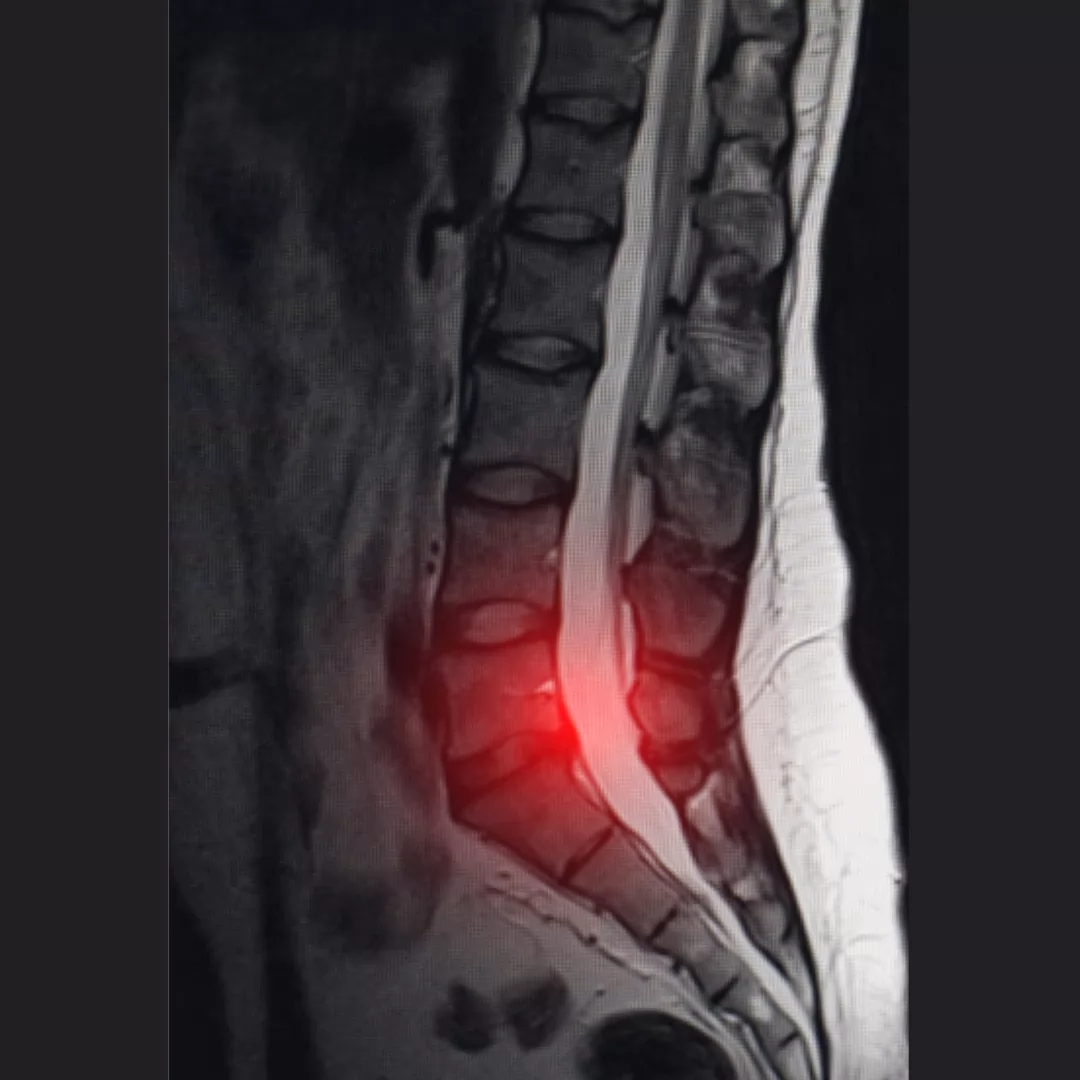Herniated Disc
What Is A Lumbar Herniated Disc?
There are 5 vertebrae in our lumbar area. And between these bones have discs. Disk; it is a special connective tissue organ, and it provides the durability and mobility of the spine, the absorption of shock-like impacts to the spine, and the balanced distribution of the force to the surrounding tissues.
Lumbar Herniated disc; It is a disease that occurs as a result of herniation of these discs, which act as shock absorbers. There is a soft part called the nucleus pulposus inside the discs. There is a harder fibrous layer called the annulus fibrosus on the outside of this section. First, the anatomical integrity of the outer part is disrupted. And so the soft part inside is moved outward. The result of this situation is called herniation.
Herniated disc; compresses the spinal canal and the nerves passing through it. That, some chemicals released from the disc to the environment also affect the nerve roots then cause pain.
Symptoms Of Lumbar Herniated
Back and leg pain is the most clear complaint. But sometimes only one of them back or leg pain can be found. Movement restriction and limping may be observed. With pain; numbness, tingling in the legs, loss of strength and thinning (atrophy) may be seen as the disease progresses.
Sometimes, large lumbar hernias may occur, extending from the midline to the spinal canal and compressing the nerves. And this type of lumbar hernia can occur in other complications along with pain. To mention some of them; Incontinence or inability to urinate and defecate may lead to paralysis in the legs, loss of sensation and sexual dysfunctions. This clinical picture is called cauda equina syndrome. Even small, medium-sized hernias may cause similar complaints in patients with already narrow spinal canal. Appropriate treatment should be performed with timely intervention, without allowing the disease to progress to this degree.
Diagnosis of Lumbar Hernia
Physical examination and imaging methods (MR and X-ray) are evaluated together. Examination findings are the main guide in the diagnosis. MRI and X-ray findings are important to confirm the examination.
What Is The Main Cause Of Hernia?
There may be many external factors, such as lifting a heavy load or doing a reverse movement. Personal factors can also cause a herniated disc.
At the beginning of the personal factors; Degeneration occurs in the cartilage called disc, which is located between the vertebrae. However, as age progresses, the veins feeding the disc decrease and are not seen at all after the age of eight. After this age, the nutrition of the disc is by diffusion. The water content of the discs also starts to decrease gradually from childhood. While the ratio of water in a fetus's disc is 90%, this ratio decreases to 80% in children and 50-60% in adults. As a result, the disc also gets smaller and smaller in height. Nutritional disorder and micro-level changes occur in the discs. However, when the mechanical forces applied on the disc with added, the disc begins to herniate. The amount of oxygen and nutrients entering the disc gradually decreases. Metabolism wastes become more difficult to put out. The disc loses its elasticity over time. And it can no longer perform the mission of transmitting force and sending the force to the surrounding tissues in a balanced way. The number of support cells in the disc that perform the repair function also decreases with age. When the person makes a wrong move, the soft part inside the disc easily tears the capsule around it and protrudes and a herniated disc occurs. Its the last straw for lifting a light object or just coughing may also be sufficient.
Diseases of the veins, diabetes and smoking; affects the quantity and quality of blood flow to the disc. Therefore, nutrition be affected negatively and speeding up to progress of degeneration.
At the beginning of the external factors affecting the formation of lumbar hernia; aimless movements during daily activities. When we bend or lie down while lifting a load; discs at the waist should be asymmetrical load.
Preventing Methods From Lumbar Hernia
In order to protect the health of the back, a person should never lift a heavy load, and if who is going to do it; should definitely take the object from the ground by bending whom knees by crouching. Should do exercises that strengthen the back and abdominal muscles.
Treatment Methods of Lumbar Herniated Disc
Non-surgical treatment methods: There is a non-surgical method called conservative treatment in the early stages of hernia development. In this process, the patient is given pain relievers, muscle relaxants, anti-inflammatory and some antidepressant drugs. Moderate-firm bed rest is recommended, physical therapy or laser treatment can be done. Electrotherapy, taping traction and manipulation treatments can be applied.
Surgical treatment methods: If the surgery is decided definitively, the patient should be operated without delay. Because if this process is prolonged, the risk of paralysis occurs. With this; A timely, appropriate and adequate surgical intervention can make the patient comfortable for life.
Microsurgery: The operation is performed with the help of a microscope.
Endoscopic surgery: It is the closed method and camera-assisted surgery.
